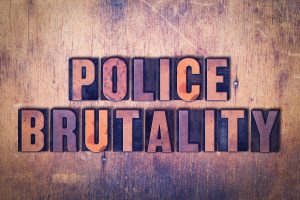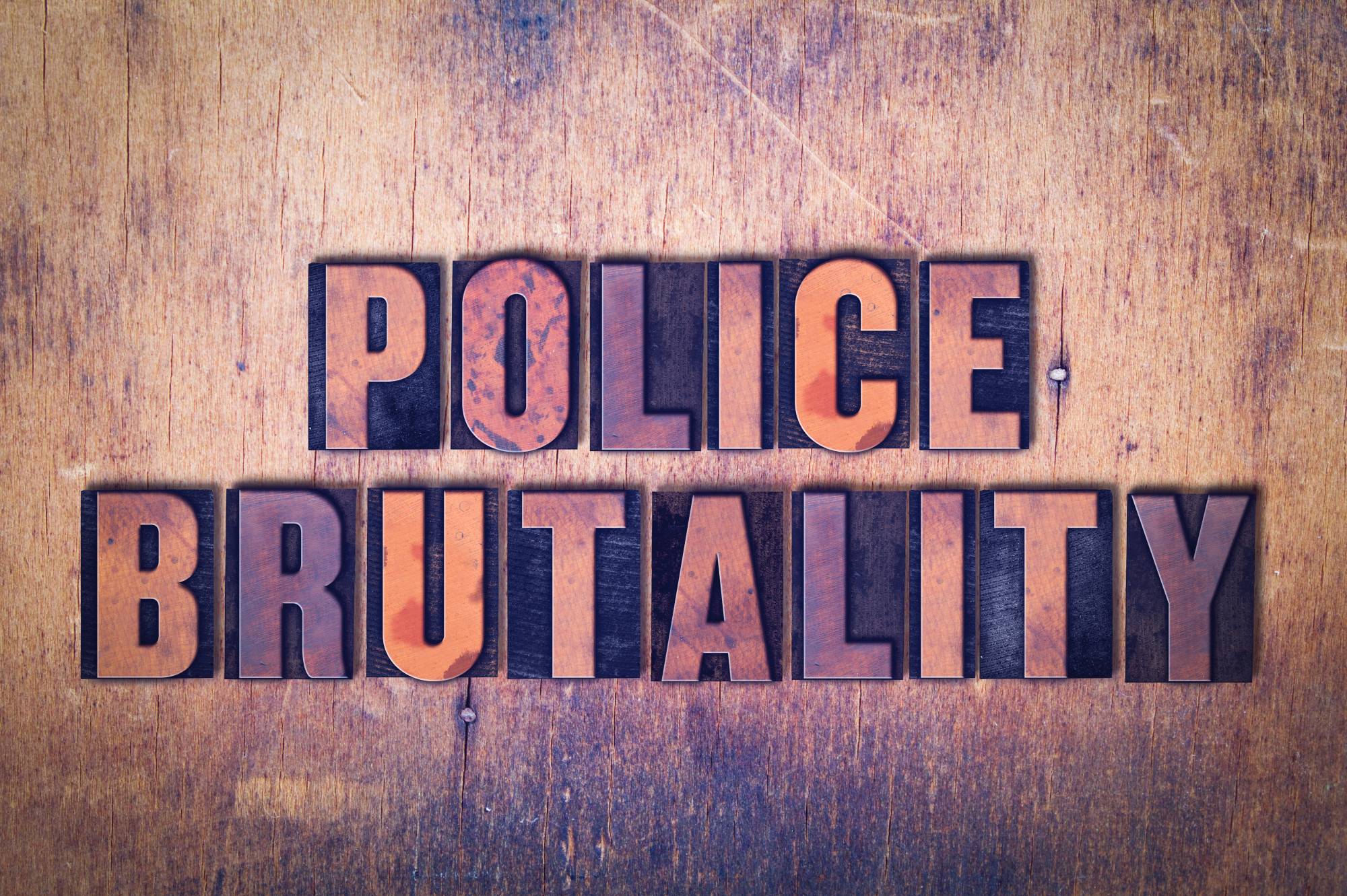
As public speakers, there is often the chance that we’ll be called on to give a speech on an important social issue. What we need to realize is that topics like this can cause our audience to become highly charged — there’s no question that they’ll be paying attention to what we are saying! This is why what we say when we are giving a speech like this is so important. We need to take the time to make sure that we have fully researched our topic so that we can present a complete picture of the issue. Let’s take an example of police brutality and show what this kind of research can look like.
Police officers are trusted to protect the public.
They are government agents, responsible for ensuring law and order is obeyed and that people are safe. They confront people who endanger these principles. They have the legal power to use physical – and sometimes deadly – force when needed.
However, police officers can sometimes abuse these powers.
What is police brutality? Read more to find out what it is, recent cases, and what to do if you feel you have been affected.
What Is Police Brutality?
People trust that a police officer uses the force needed to ensure that the public is safe. They are government agents, and the 10th Amendment of the U.S. Constitution defines the limits of these powers.
Sometimes, police officers misuse and abuse these powers and the trust given to them. They can use force when it is not necessary, or more force than the situation requires. This is defined as police brutality.
Police brutality can have wide-ranging consequences. Not only does it affect the immediate victims, but it can also undermine the community’s trust in its police force.
The situation is not a black and white one; it can sometimes be difficult to decide and define the necessary amount of force for a situation.
The controversy and debate around police brutality date back to at least the 19th century. It has been discussed a lot in recent years within communities and the media, as many instances and examples circulate in the news all over the world.
Police Misconduct or Police Brutality?
Police misconduct is defined as inappropriate actions taken by police officers and law enforcement individuals.
Examples of police misconduct cover a huge range of activities. Police misconduct can include coerced confession, false imprisonment, witness tampering and spoiling evidence.
Police brutality is one form/example of police misconduct, and can sometimes be the most shocking and violent form of misconduct.
Forms of Police Brutality
The most obvious form of police brutality is a physical form, where a police officer uses unnecessary physical force in a situation. This is the easiest form of police brutality to witness and report.
Police officers can use things such as batons, pepper spray, water, tasers and guns to intimidate or harm individuals in a way that is not necessary. At a time when public gun control is so widely debated, police use of guns and weapons are also receiving increased attention.
Police brutality can also take other forms. This can include false arrests, verbal abuse, psychological intimidation, sexual abuse, discrimination, police corruption, racial profiling, and political repression. These forms of police brutality can be more difficult to identify, report and prove.
When these actions occur it becomes more difficult – and sometimes impossible – to ensure that justice is served.
It can also become difficult to prove and ensure justice as, according to a study in the Journal of Policing and Society, members of law enforcement are less likely to report colleagues’ police brutality. This is known as the blue code of silence.
In addition, a 2016 study in the journal Nature found that misconduct by one police officer increased the likelihood that other officers would also engage in misconduct.
The History of Police Brutality
Police brutality is not a new issue.
The American press used the term “police brutality” as early as 1872 when the Chicago Tribune reported the beating of a civilian under arrest at the Harrison Street Police Station.
It has been a problem in society since the 19th century, primarily around the Industrial Revolution in the 1870s. At that time, many workers were becoming more aware of their rights, and the abuse of these rights by their employers. Strikes became more frequent, and law enforcement would often physically harm the protestors.
It is likely that police brutality was prevalent and common far before this, but this was when the issue began to be widely discussed by the public.
Police brutality continues to be a prevalent issue in today’s society.
Media and Police Brutality
As technology continues to develop and improve, police brutality is becoming increasingly reported.
Smartphones are incredibly common in society. This means that members of the public are able to record – and therefore prove – instances of brutality and misconduct by law enforcement individuals.
The media is, therefore, able to report instances of police brutality more widely, reaching an increasingly large audience.
Racial Profiling
Anyone – regardless of race, gender or age – can become a victim of police brutality. But racial profiling is becoming an increasingly reported form of police brutality.
Racial profiling happens if a police officer uses unnecessary force based on someone’s race. According to Mapping Police Violence, “Police killed 1,147 people in 2017. Black people were 25% of those killed despite being only 13% of the population.”
If this happens, a person can claim that their right to equal protection under the law has been violated. They can also claim under Section 1983 of the Civil Rights Act of 1871.
Examples of Police Brutality
We have already discussed examples of the earliest reported instances of police brutality during the 19th-century industrial revolution. But police brutality has continued to be a problem in our society, to this very day.
In the 1960s, police brutality became infamous during the Civil Rights Movement. Police officers often used high-pressured water guns and canons, as well as dogs, to injure civilians and prevent or end demonstrations. This is another example of excessive force.
In March 1991, members of the Los Angeles Police Department physically beat an African American suspect, Rodney King. A white civilian recorded the incident, which led to extensive media coverage and criminal charges against several of the officers involved. The four officers charged were acquitted in April 1992, sparking riots. This led to 53 deaths, 2,383 injuries, and almost $1 billion worth of financial losses.
Police brutality continued to be a problem following Hurricane Katrina in 2005. Five police officers were convicted of unlawful shootings and cover-ups, which resulted in two fatalities and four injuries. The officers were only convicted in 2011.
One recent case of racial profiling that led to police brutality was that of George Zimmerman; a watchman of a Florida neighborhood shot a 17-year-old unarmed black man.
In 2014, the UN Committee against Torture condemned police brutality and excessive use of force by law enforcement officers in the US. The report particularly highlighted the “frequent and recurrent police shootings or fatal pursuits of unarmed black individuals.”
Police brutality is also an issue all over the world.
Brazil
The Brazilian police have a history of violence, especially against the lower social classes. This also began in the 19th century, when police brutality was used to control slaves.
More recently, the Brazilian police force has become a state responsibility and has been increasingly militarized. More than 6,160 people were killed by the Brazilian police in 2018.
Greece
The Greek Police is known officially as the Hellenic Police.
One of the first documented cases of police brutality happened in 1976. A 16-year-old activist called Sideris Isidoropoulos was killed by police while he put up campaign posters on a public building.
In 1980, 20-year-old protester Stamatina Kanelopoulou was killed by the Greek police. Kanelopoulou was beaten to death by members of the police force during a demonstration to commemorate the 1973 uprising against the military junta.
Know Your Rights
Some of your basic rights are listed below. If these are not protected, then you may be a victim of police brutality.
- You are entitled to due process rights. This is in the Fourth and Fourteenth Amendments to the Constitution.
- If a police officer wants to carry out a legal search and you have not yet been arrested, they must have a warrant. This is a Fourth Amendment constitutional right.
- Police officers must have a reasonable belief that evidence or illegal items are present, in order to get a warrant for a search.
- If evidence is found without a warrant, it is unlikely to be admissible in court.
- If evidence is in plain sight, police officers do not have to get a warrant to continue the search.
- A police officer can only ‘stop and frisk’ you if there is reasonable suspicion that you have been or are involved in a crime. This is in the Fourth Amendment of the Constitution.
- Your civil rights are protected by the Civil Rights Act of 1871.
Laws Against Police Brutality
There are laws against police brutality, in place to protect the public.
Section 1983 of the Civil Rights Act of 1871 allows you to sue law enforcement for anyone that has been deprived of their civil rights.
Contact these police brutality attorneys if you have been a victim of police brutality, you know someone that has, or you have witnessed police brutality.
Understand and Prevent Police Brutality
Police officers are entrusted with huge responsibilities. It is their job to ensure law and order, and keep the public safe.
Police brutality is a serious issue. When police officers abuse the trust given to them, there are serious consequences for individuals involved as well as the public more widely.
As a society, we must do everything that we can to prevent police brutality now that you know what is police brutality you can help too. It is important that we all remain vigilant and aware of what is going on in our society, and report and prevent corruption whenever possible.
Don’t forget to bookmark our site to never miss our latest posts!

